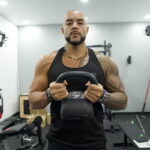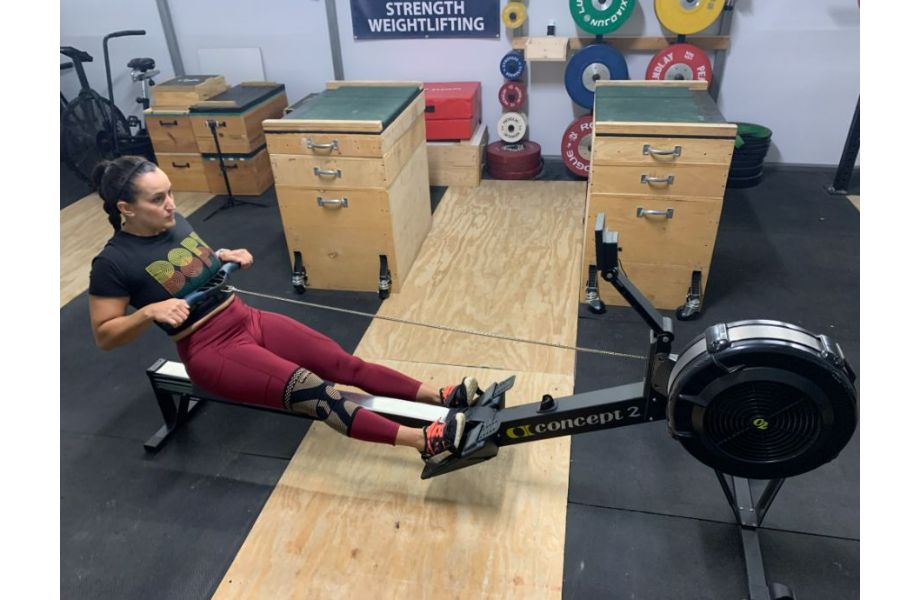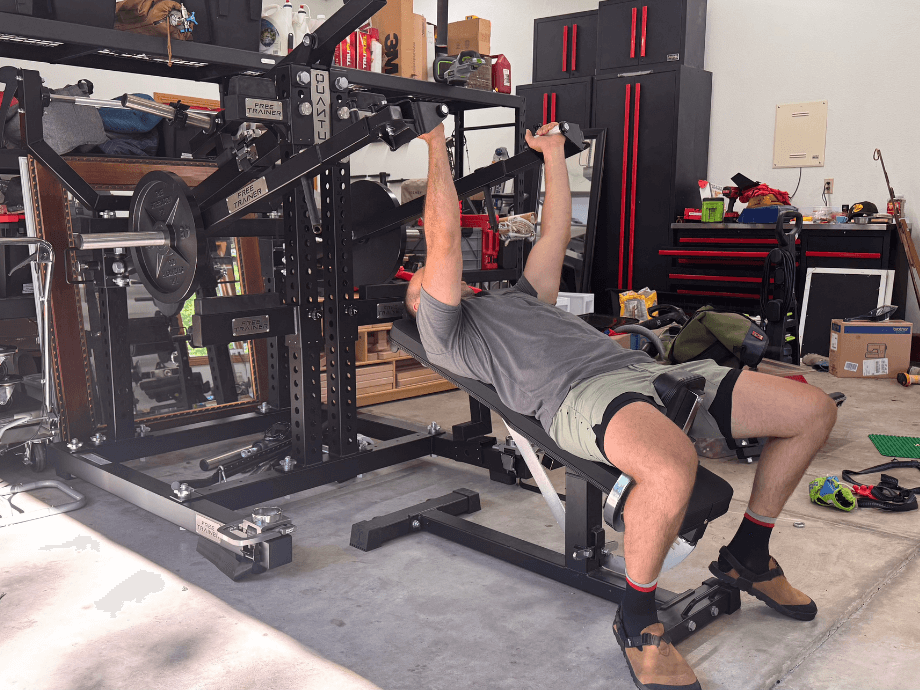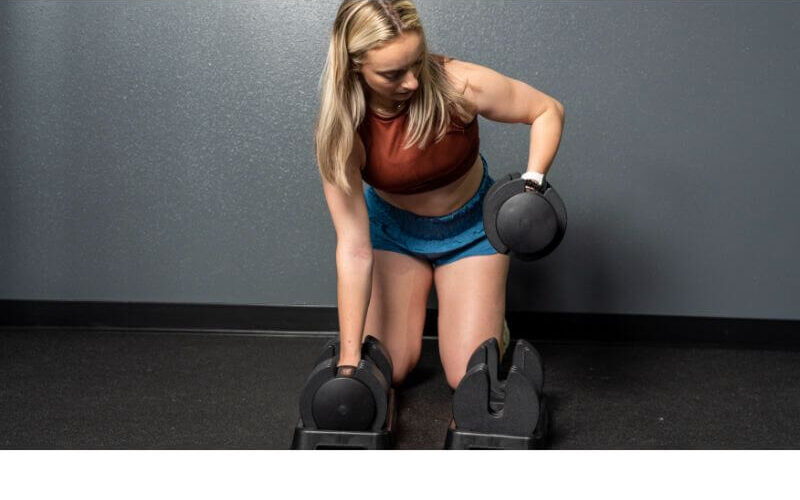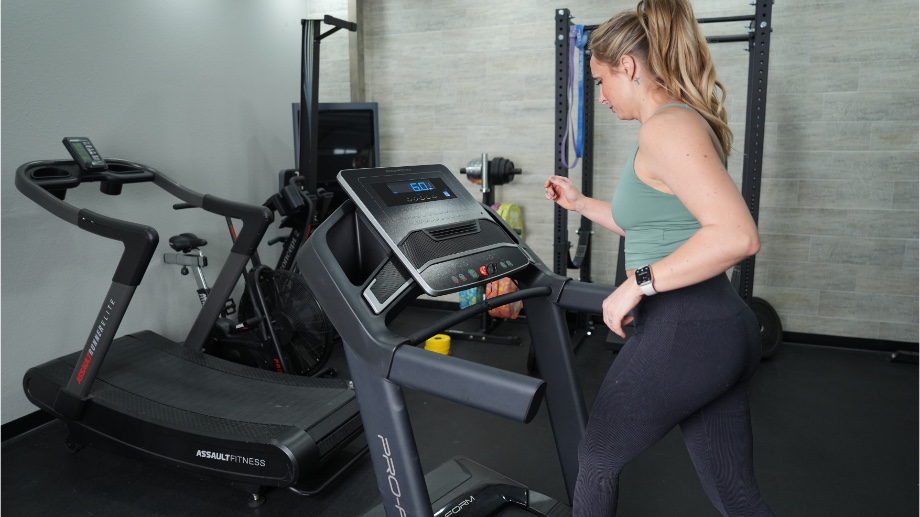It’s no secret that the rowing machine has become one of the most popular pieces of home gym equipment. According to the Sports and Fitness Industry Association, the number of people rowing indoors increased by nearly 20% between 2014 and 2021. A staple in CrossFit and high-intensity interval training (HIIT) workouts, it offers a low-impact but highly valuable form of cardiovascular exercise that can also help you achieve a lean, athletic physique.
So, how long does it take to reap the rewards of your efforts? Is 30 days of rowing enough time to achieve tangible results? We aimed to answer this question by having Kate Meier, GGR senior director of content and a certified personal trainer (CPT) and CrossFit Level 1 instructor, document her own “30-day rowing machine before and after” experiment, complete with her first-hand insights and valuable pro tips on getting the most out of your indoor rowing sessions.
RELATED: Creative Ways To Use A Rower
Last but not least, in addition to covering the benefits of rowing, I’ll use my expertise as a CPT to outline a 30-day training program so you can see just how much progress you can make in a month.
An Inside Look at A Trainer’s 30-Day Rowing Journey
As an experienced trainer, CrossFit/weightlifting coach, and fitness equipment expert, it’s safe to say Kate Meier is familiar with rowing machines. Although running was initially her favorite form of cardio, she’s grown to appreciate the almighty erg.
RELATED: Best Rowing Machines
“Rowing has become a staple in my fitness routine. Physically, it’s a full-body workout that engages my legs, core, and upper body while providing a cardio boost,” Kate explains. “Mentally, rowing can be both challenging and rewarding. Seeing improvements in my [workout] splits and overall performance is a huge motivator.”
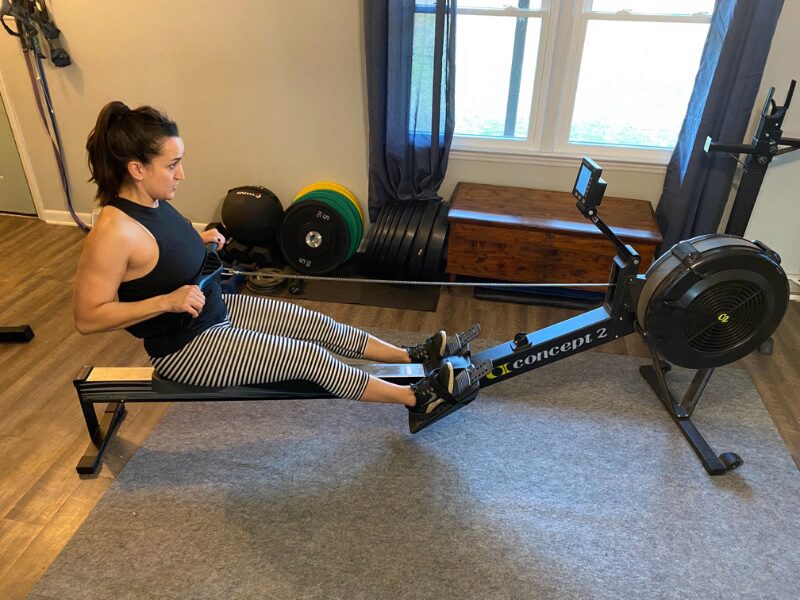
Kate typically rows 1,000 meters before every workout as a warm-up and incorporates a 5K row one to two times a month.
“I also love that there is a bit of a resistance component with rowing, especially if you row with your damper/the drag set high. I feel like I’m giving my upper body a small pump while still working my lungs,” Kate adds.
Tips for Beginners
Kate emphasizes the importance of beginners learning proper form and starting slowly.
“Proper form is crucial to avoid injury and maximize efficiency. I recommend keeping your stroke rate between 20 to 25 strokes per minute for most workouts,” she explains. “Don’t underestimate the intensity of rowing. Start with shorter sessions and gradually build up. Just as you would build up with running or lifting weights, you should do the same with rowing.”
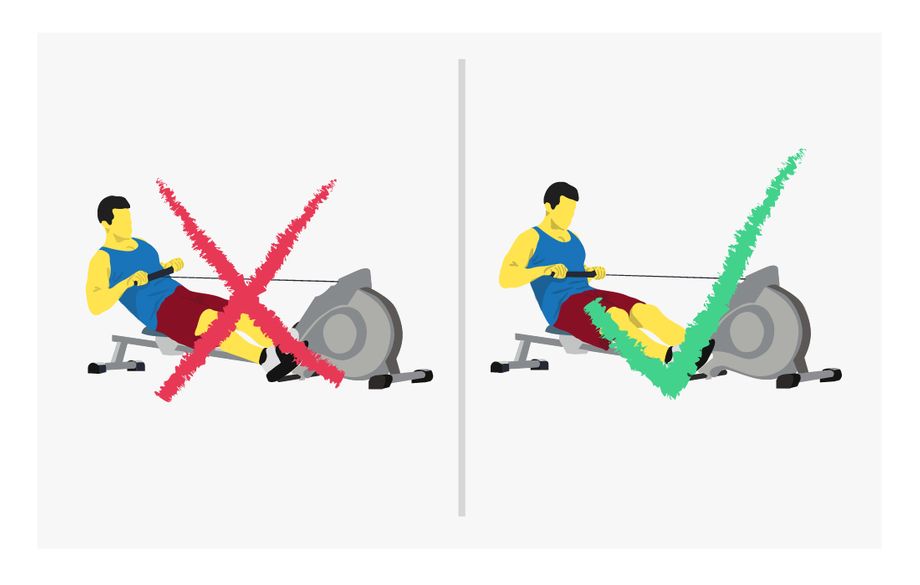
How exactly does Kate go about implementing rowing with herself and her clients? These are her four main strategies:
- Warm-ups
- Circuits of 250 to 1,000m rows, followed by other exercises like squats, presses, push-ups, and core work
- Rowing intervals with either a 1:1 work-to-rest ratio or a 2:1 work-to-rest ratio, depending on fitness level
- Long-duration rows of 2K to 5K
“I’m a big fan of variety in workouts unless you’re training for something specific. Most of us aren’t going to a rowing competition, so playing with different workouts on the rower is a great way to challenge your cardiovascular and muscular endurance,” says Kate.
Benefits of Rowing
The benefits of rowing machines extend beyond just getting a solid cardio workout. Here’s a detailed look at how an erg can enhance your health and fitness.
Can Help Improve Your Cardiovascular Fitness
Rowing is an excellent way to improve your cardiovascular health. Regular rowing sessions can significantly increase your heart rate, enhance lung capacity, and improve cardiovascular endurance. A 2023 study published in the European Journal of Applied Physiology1 showed that 12 weeks of upper-body rowing improved cardiorespiratory fitness and increased resting brachial artery diameter, which can improve blood flow and exercise performance.
Can Help Build Strength And Muscle
Rowing targets just about every major muscle group, including your glutes, hamstrings, quads, back, and arms. In fact, a study in The Sport Journal2 claims that the rowing motion recruits 85% of the musculature in the human body. While rowing alone won’t necessarily help you build bulging biceps or massive quads, it can be a valuable part of your overall fitness plan.
RELATED: Does Rowing Build Muscle?
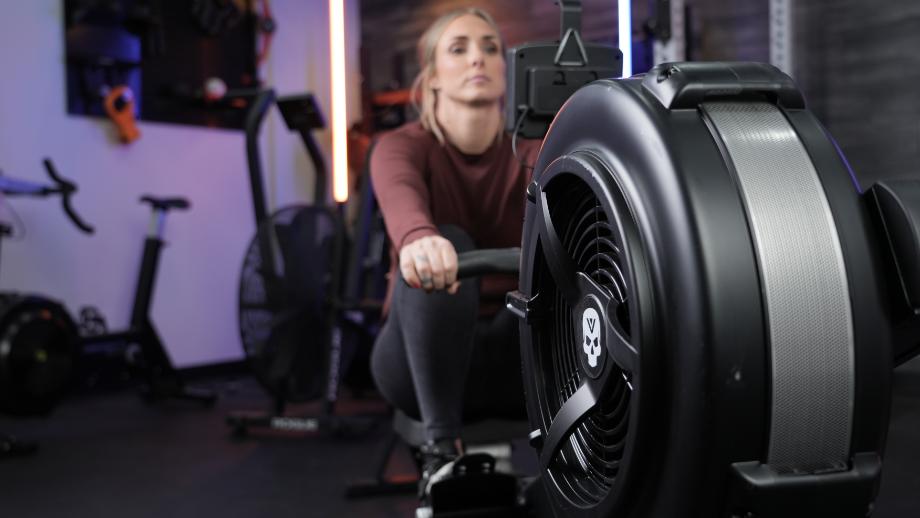
Moreover, rowing machines like the Concept2 RowErg or the Peloton Rower offer adjustable resistance that caters to beginners and advanced users. This resistance component is essential for muscle growth, providing the necessary stimulus for muscle adaptation and development. When combined with a well-formulated strength training program, consistent rowing may help you develop a stronger, fitter, and more muscular body.
Can Help With Weight Loss And Fat Burning
A high-intensity rowing workout can burn a significant number of calories, aiding in weight loss and body fat reduction. According to the American Council on Exercise (ACE)3, a 175-pound person rowing at a moderate intensity can burn around 277 calories in 30 minutes. This calorie-burning potential makes rowing an effective exercise for those looking to burn fat and achieve a leaner physique.
RELATED: Rowing For Weight Loss
Furthermore, rowing’s combination of cardiovascular and resistance training elements makes it particularly efficient for fat loss. Regular rowing workouts can boost your metabolism and promote sustained fat-burning even after the workout. This phenomenon, known as excess post-exercise oxygen consumption (EPOC)4, ensures that your body continues to burn calories at an elevated rate after exercising.
Low-Impact Cardio Option
Rowing is gentle on your joints, making it ideal for individuals with joint issues or those seeking a low-impact cardio workout. Unlike high-impact activities like outdoor running or CrossFit, the smooth, gliding rowing motion minimizes stress on your knees, hips, and ankles, making rowing accessible to a broader population, including older adults and those recovering from injuries.
Can Provide A Mental Boost
It’s no secret that exercise can have a major impact on your mental health. For some people, the rhythmic, repetitive nature of rowing can have a meditative effect, helping to clear the mind and reduce anxiety. A 2019 study5 on the effects of aerobic exercise on mental health showed that a 12-week aerobic exercise training program positively affected self-esteem and mental health.
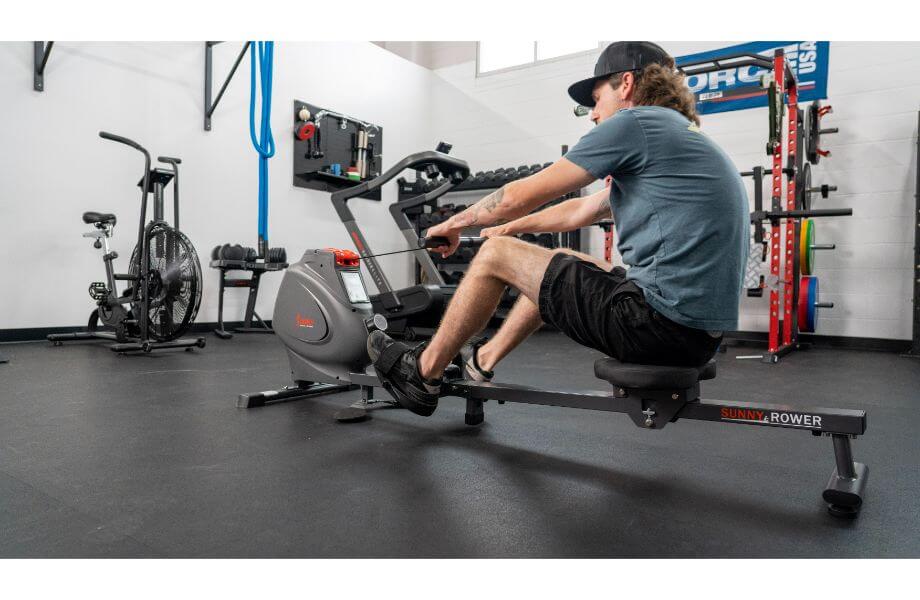
In addition to the stress-relief benefits, the sense of achievement and progress gained from consistent rowing can help boost self-esteem and motivation. Tracking improvements in metrics such as distance rowed, split times, and overall performance provides tangible evidence of progress, fostering a positive mental state and a sense of accomplishment.
Detailed 30-Day Rowing Workout Plan
To help you start your 30-day rowing journey, here is a detailed workout plan designed to improve your speed, endurance, and overall fitness. I separated the program into weekly training blocks so you can make steady progress.
Initially, focus on perfecting your form and growing comfortable using the machine. Then, you will work on developing endurance with longer-duration sessions. By Week 3, you will be ready to ramp up the intensity by increasing your stroke rate. The final week will allow you to show off your improved form, endurance, and power through a series of challenging workouts.
Week 1: Introduction and Form Focus
| Day 1 | 10-min light row, focusing on form |
| Day 2 | 15-min steady row at a moderate intensity |
| Day 3 | Rest or light cross-training (walking, biking, elliptical) |
| Day 4 | Five 1-min row sprints with 1-min rest between intervals |
| Day 5 | 20-min steady row at a moderate intensity |
| Day 6 | Rest or light cross-training |
| Day 7 | 10-min light row, focusing on form |
RELATED: Rowing Workouts For Beginners
Week 2: Building Endurance
| Day 8 | 20-min steady row at a moderate intensity |
| Day 9 | Four 2-min row intervals with 1-min rest between intervals |
| Day 10 | Rest or light cross-training |
| Day 11 | 5-min steady row at moderate intensity |
| Day 12 | Six 1-min row sprints with 1-min rest between intervals |
| Day 13 | Rest or light cross-training |
| Day 14 | 15-min light row, focusing on form |
RELATED: Stamina Vs Endurance
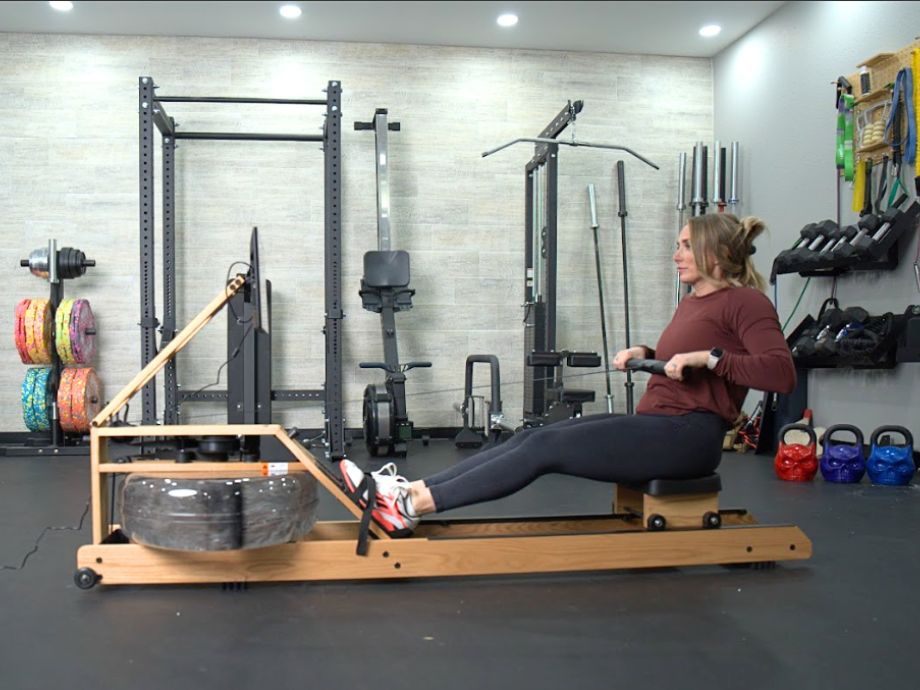
Week 3: Increasing Intensity
| Day 15 | 30-min steady row at a moderate intensity |
| Day 16 | Five 2-min row intervals with 1-min rest between intervals |
| Day 17 | Rest or light cross-training |
| Day 18 | 20-min row at a moderate to high intensity |
| Day 19 | Eight 1-min row sprints with 1-min rest between intervals |
| Day 20 | Rest or light cross-training |
| Day 21 | 25-min light row, focusing on form |
RELATED: 3 Heart-Pumping Rowing Interval Workouts
Week 4: Peak Performance
| Day 22 | 35-min steady row at a moderate intensity |
| Day 23 | Six 2-min row intervals with 1-min rest between intervals |
| Day 24 | Rest or light cross-training |
| Day 25 | 30-min row at a moderate to high intensity |
| Day 26 | Ten 1-min row sprints with 1-min rest between interval |
| Day 27 | Rest or light cross-training |
| Day 28 | 30-min light row, focusing on form |
| Day 29 | 40-min steady row at a moderate intensity |
| Day 30 | 5k row at your best effort |
RELATED: 4 Rowing Machine Workouts
What Muscles Does Rowing Work?
As a full-body exercise, each muscle group plays a vital role in ensuring an efficient and effective rowing motion. Here’s an overview of how each muscle group:
- Quadriceps: Your quads are heavily involved during the drive phase. They assist with knee extension and provide the initial power to propel you backward.
- Hamstrings: Activated during both the drive and recovery phases, your hamstrings help bend your knees and stabilize your legs.
- Glutes: Key players during the drive phase, your glutes contract to extend your hips and provide significant power.
- Erector spinae: These lower-back muscles help stabilize your spine and assist in the slight backward lean during the drive phase.
- Rectus abdominis: Your abdominal muscles help maintain core stability by supporting your spine throughout the rowing motion.
- Obliques: Your obliques stabilize your torso and provide rotational stability for a smooth, controlled rowing motion.
- Latissimus dorsi: Heavily involved during the pull phase, your lats contract to draw the handle towards your body.
- Rhomboids: Engaged during the pull phase, your rhomboids retract your shoulder blades, aiding in your arms’ backward motion.
- Trapezius: Engaged throughout the rowing motion, your traps stabilize your shoulder blades and lift your shoulders during the pull phase.
- Deltoids: These muscles extend your arms backward and stabilize your shoulders during the pull phase, particularly the posterior (rear) deltoids.
- Biceps: Engaged during the pull phase, your biceps flex your elbows to bring the handle towards your body.
- Forearms: Your forearms help maintain firm control of the handle during the drive and recovery phases.
- Calves: Your calves stabilize your legs during the drive phase and help control your foot position during the recovery phase.
RELATED: What Muscles Does Cycling Work?
Common Rowing Mistakes to Avoid
To get the most out of your rowing workouts and avoid any setbacks, here are common mistakes to watch out for:
Neglecting The Warm-Up And Cool-Down
Skipping warm-up and cool-down routines is a surefire way to not set your body up for success. Proper warm-ups prepare your muscles and cardiovascular system for the upcoming workout, reducing the risk of strains and other injuries. Plus, you can use this time to prepare your mind to crush your erg session.
RELATED: 10 Warm-Up Exercises
Similarly, cool-downs are essential for gradually bringing your heart rate back to normal. Incorporating a few minutes of light rowing followed by static stretching and foam rolling can enhance recovery and maintain flexibility.
RELATED: 14 Cool Down Exercises
Forgoing Proper Form
Proper rowing form involves maintaining a straight back, driving with your legs, and using a smooth, controlled motion. However, using an incorrect technique can strain your muscles and reduce the effectiveness of your workout.
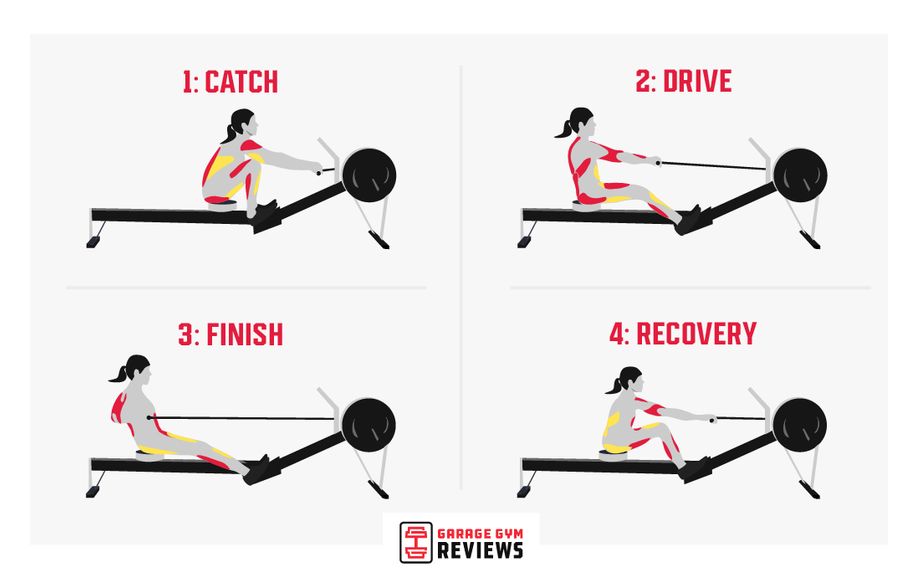
A 2012 study6 on rowing injuries found that most related to overuse, with the knee, lumbar spine, and ribs most commonly affected. In addition, alterations to your technique or abrupt changes in training volume can contribute to injuries. Focusing on proper form over speed should help you stay pain-free as you progress on your rowing journey.
Going Too Fast
Many beginners make the mistake of rowing too fast. Instead, focus on powerful, efficient strokes with a stroke rate between 24 to 30 strokes per minute for most workouts.
Rowing at a high stroke rate without adequate power can lead to inefficient energy expenditure and faster fatigue. It’s more beneficial to emphasize the quality of each stroke, ensuring that each pull is powerful and effective, rather than simply increasing the number of strokes per minute.
Overtraining
Avoid overdoing it, especially when starting a new workout regimen. According to a 2019 study7, a rigorous training schedule with insufficient recovery can lead to nonfunctional overreaching (NFOR) or overtraining syndrome (OTS).
RELATED: 10 Signs of Overtraining
Starting with shorter, less intense sessions allows your body to adapt to the new demands of rowing. Gradually increasing the workout duration and intensity ensures steady progress without overwhelming your body (or mind), reducing the risk of overtraining syndrome.
How To Choose The Best Rowing Machine For You
Choosing the right rowing machine is crucial for maximizing your workouts and achieving your fitness goals. Here are key factors to consider as you search for the best fit for your home gym:
- Resistance type: Rowing machines have different resistance types, including air, water, magnetic, and hydraulic. Each type offers a unique rowing experience and intensity level.
- Price range: Determine your budget and find a rowing machine within your price range that offers the best features. High-end models like the Concept2 rower and Hydrow offer advanced features at a higher price. You may also consider one of the best budget rowing machines before upgrading to a more advanced model.
- Space requirements: Consider the size of the rowing machine and the available space in your home. Some machines are foldable and can be stored easily when not in use. For some perspective, the highly popular Concept2 measures 96 inches long and 24 inches wide, with a standard seat height of 14 inches.
- Technological features: Look for rowing machines with integrated screens, app compatibility, and performance tracking. These features can enhance your workout experience and help keep you motivated.
- User reviews and ratings: Research user reviews and ratings to understand the pros and cons of different rowing machines. This can help you make an informed decision based on real user experiences.
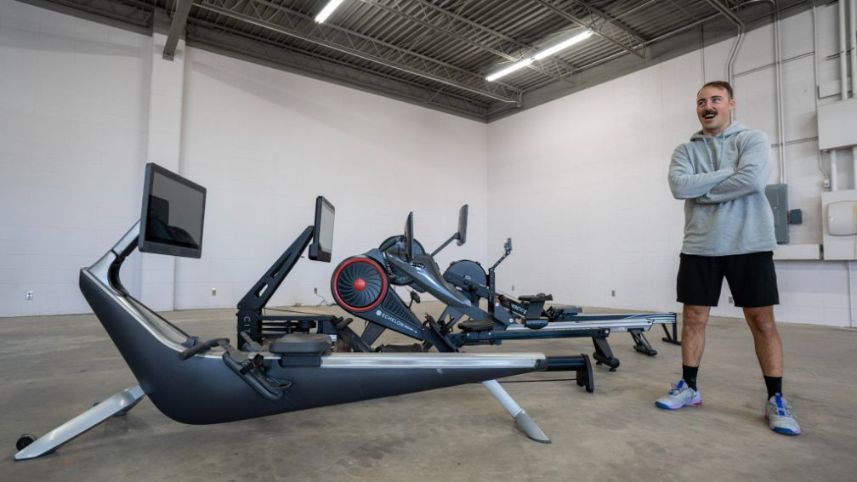
RELATED: WaterRower Vs Concept2: Which Model Is Right For You?
30-Day Rowing Machine Before And After: Final Thoughts
Daily rowing can be a great way to continually improve your cardiovascular endurance, power production, and mental fortitude. As with lifting weights, you can vary your approach to keep things fresh and interesting. Mixing in longer sessions with short, interval-style training can help you strike the right balance of intensity and sustainability.
To keep rowing in the right direction:
- Focus on proper form so you don’t suffer any setbacks that could derail your 30-day journey.
- Include regular strength training sessions to build muscle and complement your cardio workouts.
- Set benchmarks to challenge yourself to improve your stroke rate, 5K pace, and other key rowing metrics.
30-Day Rowing Machine Before And After: FAQs
What should I eat before a rowing machine workout?
Eat a balanced meal or snack containing carbohydrates and protein, such as a banana with peanut butter, a pre-workout smoothie, or Greek yogurt with fruit, about 30 to 60 minutes before your workout.
RELATED: Best Pre-Workout
How do you use a rowing machine?
Mastering a rowing machine involves four steps: catch, drive, finish, and recovery. To use a rowing machine, sit with your feet strapped in, grasp the handle, push off with your legs, lean back slightly, and then pull the handle toward your chest. Reverse the sequence to return to the starting position.
RELATED: How To Use A Rowing Machine
How long does it take to see results from a rowing machine?
You may start noticing cardiovascular fitness and muscle tone improvements within two to four weeks of consistent rowing workouts. However, your nutrition, recovery, and other factors will also impact your results.
What happens after 30 days of rowing?
After rowing every day for 30 days, you can expect enhanced cardiovascular endurance, increased muscle strength, improved rowing technique, and noticeable changes in your body composition.
References
- Hansen, R. K., Samani, A., Laessoe, U., Handberg, A., Mellergaard, M., Figlewski, K., J. Thijssen, D. H., Gliemann, L., & Larsen, R. G. (2023). Rowing exercise increases cardiorespiratory fitness and brachial artery diameter but not traditional cardiometabolic risk factors in spinal cord-injured humans. European Journal of Applied Physiology, 123(6), 1241-1255. https://doi.org/10.1007/s00421-023-05146-y
- Nabavizadeh, Omid & Hastert, Sydney & (Walter) Herda, Ashley. (2018). Relationships Among Muscle Quality and Rowing Performance. The Sport Journal
- ACE Fit | Physical Activity Calorie Counter. (n.d.). https://www.acefitness.org/resources/everyone/tools-calculators/physical-activity-calorie-counter/
- Børsheim, E., & Bahr, R. (2003). Effect of exercise intensity, duration and mode on post-exercise oxygen consumption. Sports medicine (Auckland, N.Z.), 33(14), 1037–1060. https://doi.org/10.2165/00007256-200333140-00002
- Gilani, S. R. M., & Feizabad, A. K. (2019). The effects of aerobic exercise training on mental health and self-esteem of type 2 diabetes mellitus patients. Health psychology research, 7(1), 6576. https://doi.org/10.4081/hpr.2019.6576
- Hosea, T. M., & Hannafin, J. A. (2012). Rowing injuries. Sports health, 4(3), 236–245. https://doi.org/10.1177/1941738112442484
- Birrer, Daniel. (2019). Rowing Over the Edge: Nonfunctional Overreaching and Overtraining Syndrome as Maladjustment- Diagnosis and Treatment From a Psychological Perspective. 10.1123/cssep.2019-0006.

